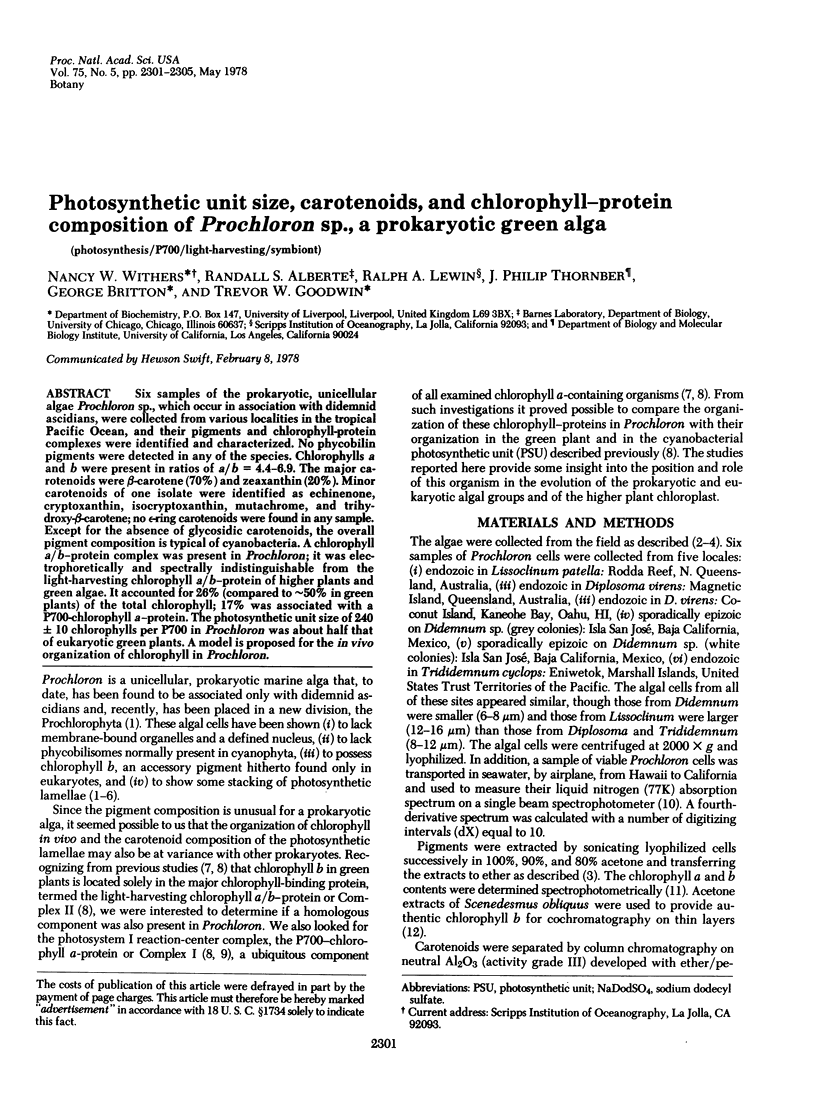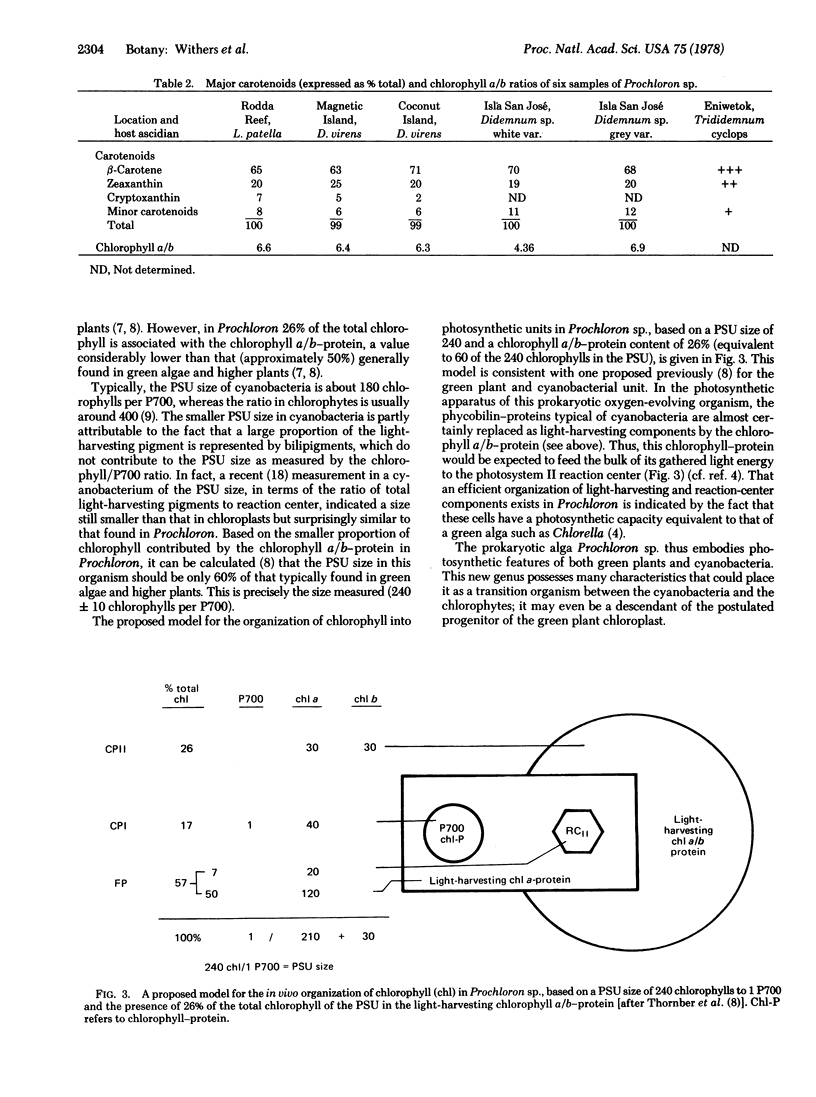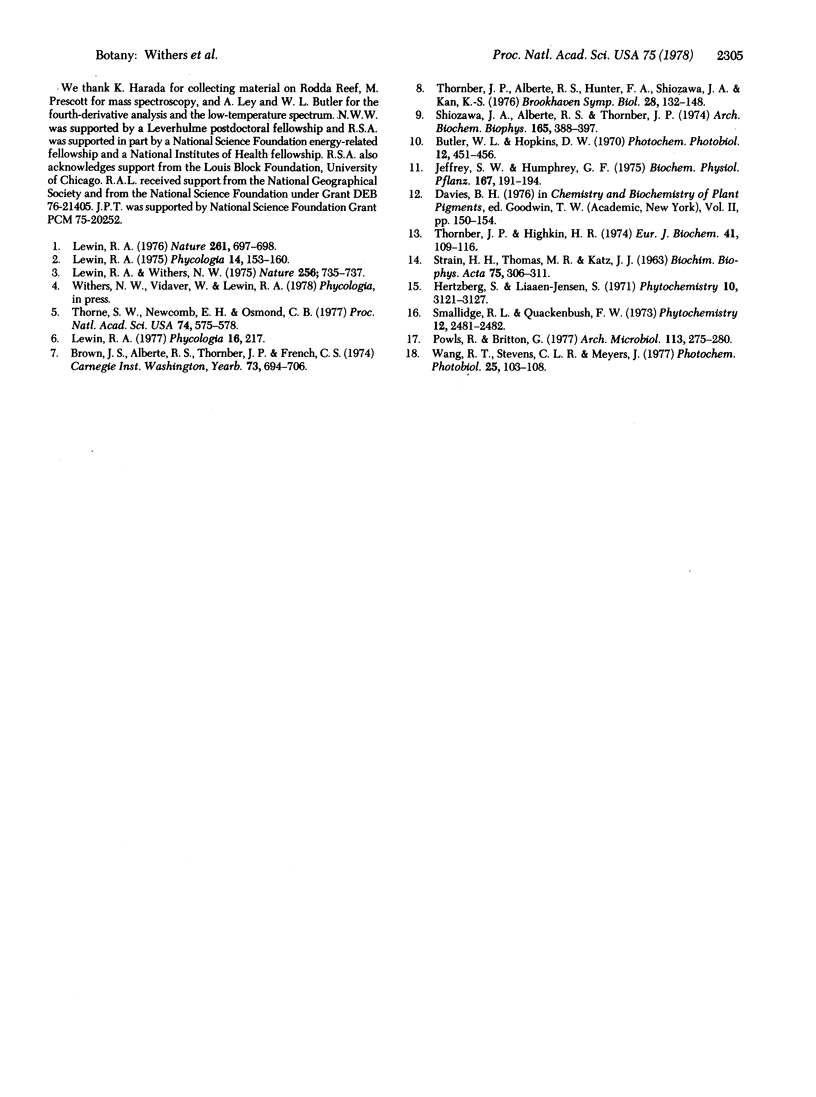Abstract
Six samples of the prokaryotic, unicellular algae Prochloron sp., which occur in association with didemnid ascidians, were collected from various localities in the tropical Pacific Ocean, and their pigments and chlorophyll-protein complexes were identified and characterized. No phycobilin pigments were detected in any of the species. Chlorophylls a and b were present in ratios of a/b = 4.4-6.9. The major carotenoids were β-carotene (70%) and zeaxanthin (20%). Minor carotenoids of one isolate were identified as echinenone, cryptoxanthin, isocryptoxanthin, mutachrome, and trihydroxy-β-carotene; no ε-ring carotenoids were found in any sample. Except for the absence of glycosidic carotenoids, the overall pigment composition is typical of cyanobacteria. A chlorophyll a/b-protein complex was present in Prochloron; it was electrophoretically and spectrally indistinguishable from the light-harvesting chlorophyll a/b-protein of higher plants and green algae. It accounted for 26% (compared to ∼50% in green plants) of the total chlorophyll; 17% was associated with a P700-chlorophyll a-protein. The photosynthetic unit size of 240 ± 10 chlorophylls per P700 in Prochloron was about half that of eukaryotic green plants. A model is proposed for the in vivo organization of chlorophyll in Prochloron.
Keywords: photosynthesis, P700, light-harvesting, symbiont
Full text
PDF




Selected References
These references are in PubMed. This may not be the complete list of references from this article.
- Lewin R. A. Prochlorophyta as a proposed new division of algae. Nature. 1976 Jun 24;261(5562):697–698. doi: 10.1038/261697b0. [DOI] [PubMed] [Google Scholar]
- Powls R., Britton G. A series of mutant strains of Scenedesmus obliquus with abnormal carotenoid compositions. Arch Microbiol. 1977 Jun 20;113(3):275–280. doi: 10.1007/BF00492035. [DOI] [PubMed] [Google Scholar]
- STRAIN H. H., THOMAS M. R., KATZ J. J. SPECTRAL ABSORPTION PROPERTIES OF ORDINARY AND FULLY DEUTERIATED CHLOROPHYLLS A AND B. Biochim Biophys Acta. 1963 Nov 29;75:306–311. doi: 10.1016/0006-3002(63)90617-6. [DOI] [PubMed] [Google Scholar]
- Shiozawa J. A., Alberte R. S., Thornber J. P. The P700-chlorophyll a-protein. Isolation and some characteristics of the complex in higher plants. Arch Biochem Biophys. 1974 Nov;165(1):388–397. doi: 10.1016/0003-9861(74)90177-5. [DOI] [PubMed] [Google Scholar]
- Thornber J. P., Alberte R. S., Hunter F. A., Shiozawa J. A., Kan K. S. The organization of chlorophyll in the plant photosynthetic unit. Brookhaven Symp Biol. 1976 Jun 7;(28):132–148. [PubMed] [Google Scholar]
- Thornber J. P., Highkin H. R. Composition of the photosynthetic apparatus of normal barley leaves and a mutant lacking chlorophyll b. Eur J Biochem. 1974 Jan 3;41(1):109–116. doi: 10.1111/j.1432-1033.1974.tb03250.x. [DOI] [PubMed] [Google Scholar]
- Thorne S. W., Newcomb E. H., Osmond C. B. Identification of chlorophyll b in extracts of prokaryotic algae by fluorescence spectroscopy. Proc Natl Acad Sci U S A. 1977 Feb;74(2):575–578. doi: 10.1073/pnas.74.2.575. [DOI] [PMC free article] [PubMed] [Google Scholar]


